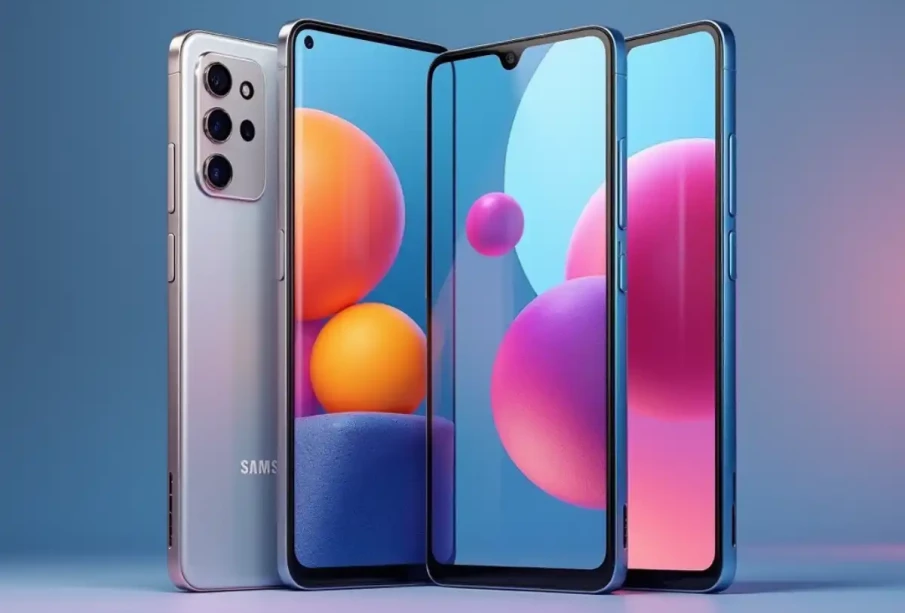When you want a phone that just works without blowing your budget, Samsung’s Galaxy A13 hits that sweet spot. It’s part of Samsung’s 2022 ‘A’ lineup alongside the A33 and A53, and it brings a big, sharp screen, long battery life, and expandable storage in a neat design.
The minimalist finish, with its glossy plastic back and subtle triple-camera stack that doesn’t stick out, looks surprisingly polished for the price. Available in black, white, or blue and with a starting price at ₦150,000, it’s an appealing option for first-time buyers or anyone upgrading on a tight budget. Just note this is the 4G model—the 5G version is a different device entirely—so let’s see what the regular Galaxy A13 actually offers.
Key Specifications
- Processor: Octa-core Samsung Exynos 850
- Memory: 3GB RAM (US), 4GB (UK)
- Storage: 32GB 3GB (US) or 64GB 4GB (UK) 128GB 4GB RAM, 128GB 6GB RAM + microSD up to 1TB
- Display: 6.6in 20:9 1080×2400 IPS LCD
- Cameras: 50MP (main), 5MP (ultra-wide), 2MP macro, 2MP depth, 8MP front
- Headphone Jack: Yes
- Battery: 5000mAh; Fast charging 15W
- OS: Android 12 with OneUI 4.1
- FM Radio: No
- Dimensions: 165 x 76.5 x 9mm (6.5 x 3.0 x 0.4″)
- Weight: 195g
- Colours: Blue, black, white
Design and Build
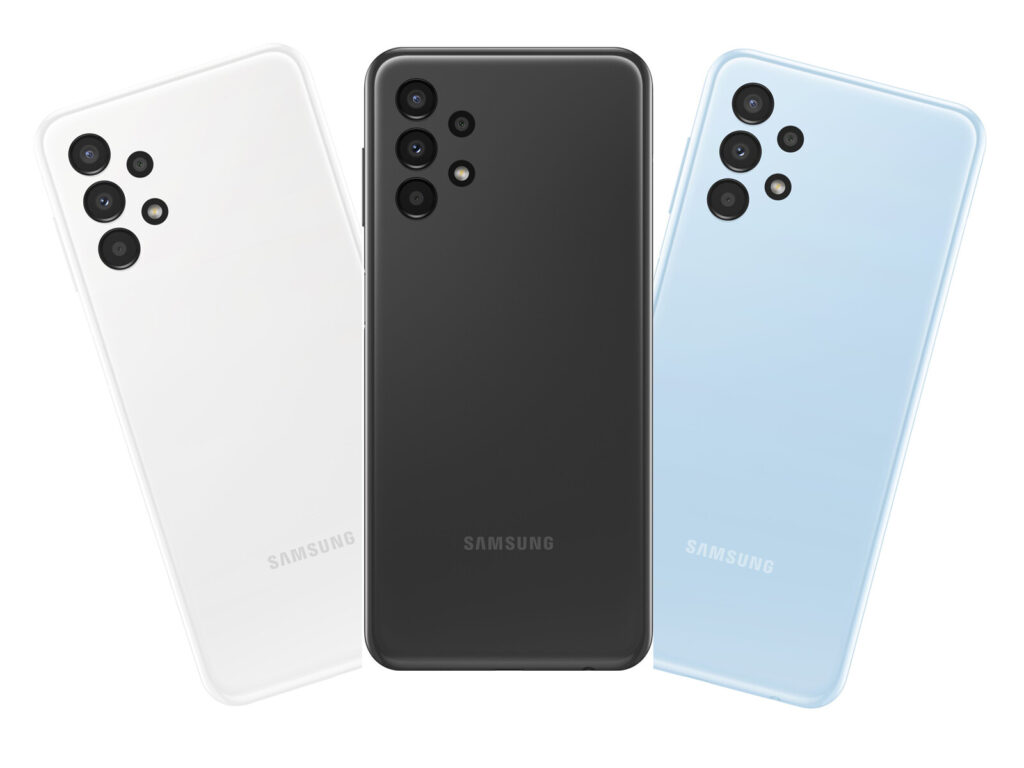
You can pick up the Samsung Galaxy A13 in black, white, peach or blue, and whichever one you go for, the design feels simple and neat. The plastic back has a smooth matte finish that does a good job keeping fingerprints away, and it curves gently into the sides so it sits comfortably in your palm. The phone is on the larger side at 165.1 x 76.4 x 8.8mm and weighs 195 grams, but it never feels unwieldy when you’re using it.
That 6.6-inch PLS LCD screen has slim bezels and a small teardrop notch at the top for the front-facing camera, so most of what you see is a display. Around the edges, you’ll find a USB-C port and a 3.5mm headphone jack at the bottom—a rarity these days—and the volume rocker up the right-hand side next to the power button. The power key also doubles as a fingerprint scanner, which is quick enough in daily use if you don’t want to bother with face unlock.
There’s nothing premium like water or dust resistance here, so you wouldn’t want to leave it out in the rain. Even so, the build feels surprisingly sturdy for a budget phone, and the smooth plastic back and simple camera layout in the top left corner give it a tidy look that doesn’t draw too much attention. It’s not going to turn heads like a flagship, and you wouldn’t expect that at this price, but it feels well thought out and looks more expensive than it is.
Display
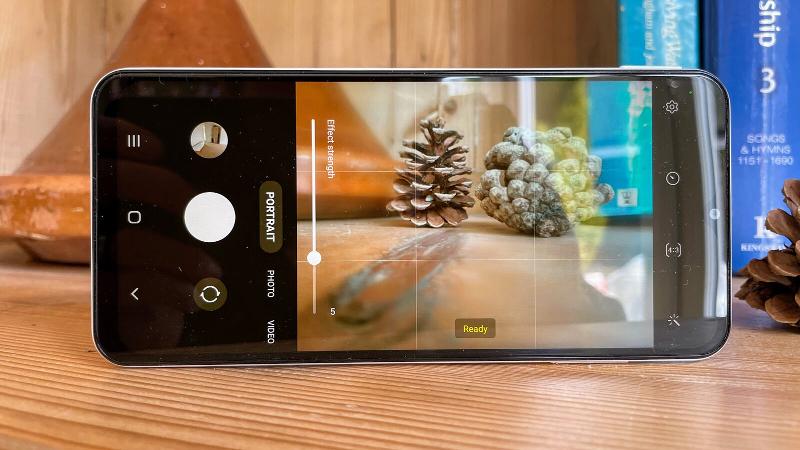
The Galaxy A13 comes with a 6.6-inch PLS LCD and a Full HD+ resolution of 1080 x 2408 pixels, so it looks sharper than you’d probably expect at this price. Gorilla Glass 5 keeps the screen safe from scratches, and it holds up well for browsing social feeds, watching videos or playing casual games.
Colours come across as fairly accurate, and even though it’s not an AMOLED panel like on pricier Samsungs, you still get decent contrast and a uniform look across the whole screen. Direct sunlight can make you squint a bit more than you’d like, and the 60Hz refresh rate doesn’t feel quite as smooth as some rival phones, but that’s what you’d anticipate in this range.
The teardrop notch and slightly chunky bezels don’t really spoil the experience—if you look straight on, it’s bright and vivid enough to do most things comfortably. It’s not going to give you the deep blacks and eye-popping colours of higher-end phones, but for everyday use, the A13’s screen holds its own and keeps most tasks looking good.
Performance (Gaming, Storage, Benchmarks)
The Galaxy A13 runs on Samsung’s own Exynos 850, an octa‑core chipset built to balance everyday use and battery life. It’s fine for basic tasks like messaging, browsing and streaming, and the phone keeps up if you don’t push it too hard. You’ll notice apps take a little longer to open and scrolling through feeds can feel a bit jerky at times. There’s a version with 4 GB of RAM and 64 GB of storage that you can expand up to 1 TB with a microSD card, and you don’t have to give up a SIM slot to do it. Other variants add more RAM or storage, depending on where you buy it. It supports 4G, NFC, Bluetooth 5 and Wi‑Fi 5, so it covers most of the basics, though you don’t get 5G.
In the US, there’s also an option powered by a MediaTek Dimensity 700, which is a bit quicker and adds 5G support if you want to spend a little more. Even so, most people looking at the Galaxy A13 probably aren’t after top‑tier speed. It’s not going to excel at gaming or heavy multitasking, and graphically intense games will struggle unless you dial down the settings. That said, if you mostly stick to lighter games and everyday apps, the phone stays responsive enough for a budget device. It’s not built for power users, but for someone after a straightforward handset that does what you need without costing too much, it’s a practical option.
Cameras
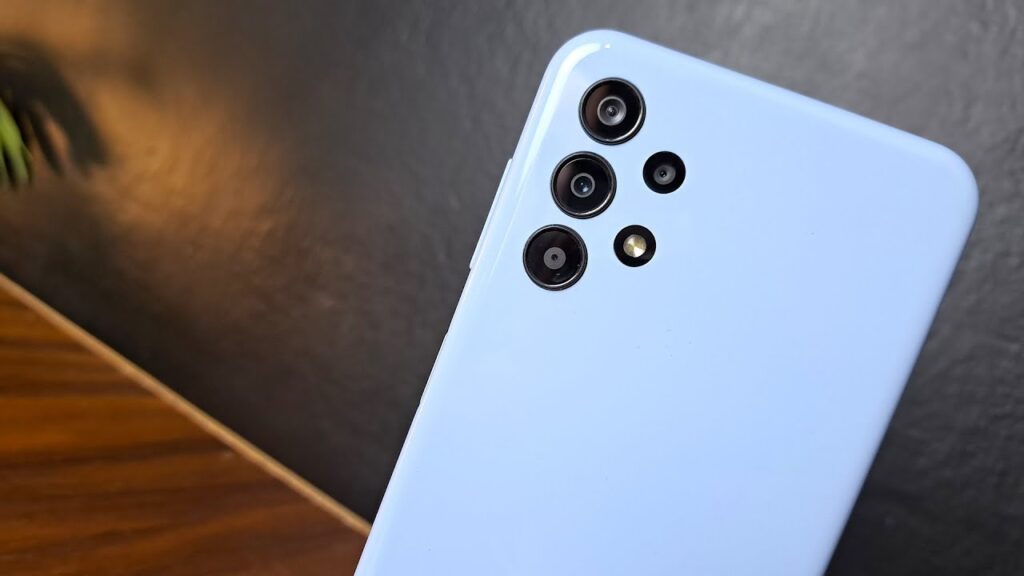
If you’re looking at the Galaxy A13, chances are the cameras caught your eye too. On the back you’ll see four lenses, but only two of them really do most of the work. The main 50MP sensor is the one that matters most—in good light it takes sharp photos with strong colour and decent dynamic range. You can zoom in a bit digitally and still hold on to some detail, just don’t expect optical stabilisation, so it’s not great for anything too quick or shaky.
There’s also a 5MP ultra-wide camera for when you want to fit more into the frame. It’s handy for landscapes or big group shots, just keep in mind the images can look softer or a bit warped around the edges. The 2MP macro lens and 2MP depth sensor round out the rear setup, but they mostly help with close-up shots or add background blur in portrait mode rather than producing standout photos on their own.
Selfies come from the 8MP front camera. In bright light, you’ll get nice, straightforward shots for sharing. Video recording tops out at 1080p at 30fps, and without stabilisation footage can be a bit shaky if you’re moving around. It’s all very much what you’d expect in this price range—nothing showy, but it’s capable enough to cover the basics if you’re not too fussy about low-light or action shots.
Battery Life and Charging
The Galaxy A13 carries a 5,000 mAh battery that comfortably lasts a full day of mixed use and often stretches a bit further. Light use like messaging, browsing, and occasional video easily reaches into a second day. Even if you’re glued to video streaming, an hour at full brightness and volume only drops the charge by about 10%, so long trips and binge sessions are covered.
That big cell is backed by a 15 W wired charger, which is all you get here since wireless charging doesn’t come at this price. It’ll take a bit more than two hours to fill up, especially if you’re topping up from empty, and it’s fine if you plan ahead. Even PCMark tests clocked the battery around 12 hours and 20 minutes, which matches up with what most people will see in day‑to‑day use.
You do need your own charger in the box, which is becoming standard even on affordable phones. It’s good for the environment, and most people already have a USB‑C adapter lying around, so it’s not a huge issue. What you can count on is that the A13’s 5,000mAh battery will keep up with your routine without making you hunt for an outlet halfway through the day.
Software
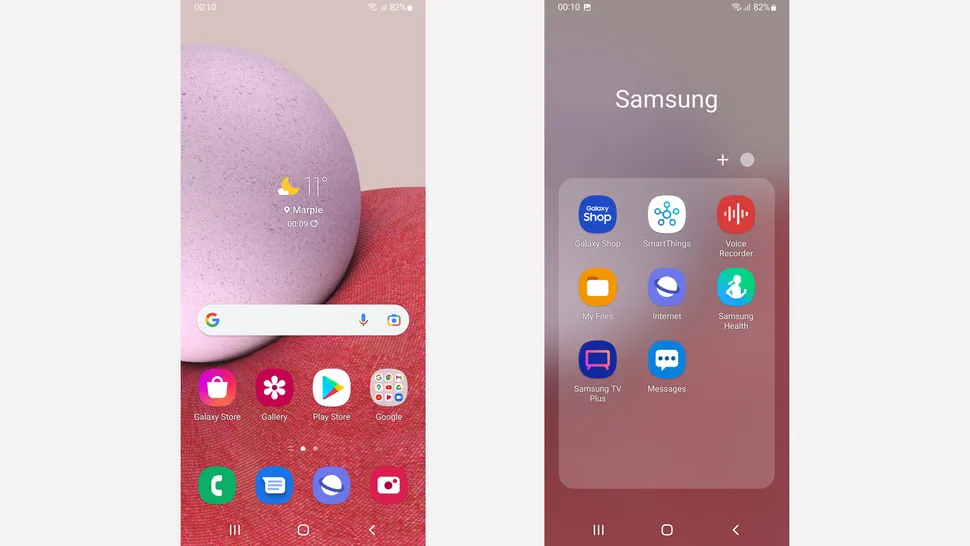
Out of the box, the Galaxy A13 comes with Android 12 and Samsung’s One UI Core 4.1, which feels familiar even if you haven’t used a Samsung phone before. The interface is clean and easy to navigate, especially once you get the hang of the quick settings panel you pull down from the top. Setup asks you if you’d like a few extra apps like Twitter and TikTok, but you can skip them. You’ll also see a handful of preloaded apps like Spotify and Netflix, plus some Microsoft tools, and most of these can be removed if you’d rather free up space.
Samsung promises two major Android updates for this model—up to Android 14—and four years of security patches. It’s not part of the company’s extended update program, but at this price, that’s still pretty decent. You also get useful features built into One UI Core, like a screen recorder, parental controls, and Digital Wellbeing tools. They help you manage the phone without feeling like the software is in your way. Even though it’s a slimmed-down version of One UI, most of the customisation options are still there. It’s not stock Android, but it’s straightforward and stable, which is really all you need at this level.
Local Pricing & Availability
As of 2025, the Samsung Galaxy A13 is easy to find across most African markets. In Nigeria, the 64 GB version usually goes for about ₦150,000, and the 128 GB model is priced around ₦215,000, though some listings like Jumia can reach ₦495,000.
In Kenya, you’ll see prices between KSh 20,800 and KSh 23,999, while in Ghana, it ranges from GHS 1,650 to GHS 2,499. In South Africa, it’s typically sold for around R2,899 to R3,499.
You can pick it up at official Samsung stores or shop online at places like Jumia and Slot.
What we like about Galaxy A13:
- Affordable pricing.
- Long-lasting battery.
- Dual SIM support and headphone jack.
- The daylight camera and video quality is solid.
- Large screen with good contrast and max brightness.
- Expandable storage
What to consider before buying:
- Will likely stop at Android 14 (Samsung’s 2-update policy)
- Average low-light camera performance.
- No waterproofing
- No charger included
- Sluggish performance
- Comes with a single speaker
💡The Samsung Galaxy A13 4G likely won’t receive the Android 15 update. It originally launched with Android 12, and Samsung generally supports its budget phones with two major Android version upgrades—Android 13 and 14, in this case. That means Android 14 is probably the last big update for the A13 4G globally.
Should you buy it?
If you want a simple, affordable Samsung phone for everyday use, the Galaxy A13 still holds up. Its big screen, long battery life and familiar One UI will feel comfortable, especially if you’re already into Samsung’s way of doing things.
Just don’t expect it to feel quick. Reviews agree that the chipset struggles with multitasking and gaming. Rivals like the Redmi Note 11 or Moto G31 offer smoother performance and better displays at a similar price.
That said, if you can catch the A13 on a good deal and don’t need much beyond the basics, it’s a fine choice, especially for first-time buyers or anyone who just wants a dependable device without spending a lot. Otherwise, you might need to stretch your budget a bit more for the Galaxy A15 5G or look at the other options in this price range.
How did we test this?
We know you want the real deal before spending your money on a new phone. While we’d love to get our hands on every device that hits the market, most of our reviews are based on solid research—checking spec sheets, user feedback, expert opinions, and real-world performance data.
Think of us as your research team doing the heavy lifting: comparing benchmarks, looking at camera samples, tracking prices, and spotting patterns across the brands we cover. Our goal is helping you make smarter phone decisions without the marketing nonsense. When we do get hands-on time, we’ll call that out clearly.
Got a phone you think we should review? Let us know in the comments. We’re always looking for what our readers actually want to know about.
Get passive updates on African tech & startups
View and choose the stories to interact with on our WhatsApp Channel
Explore
